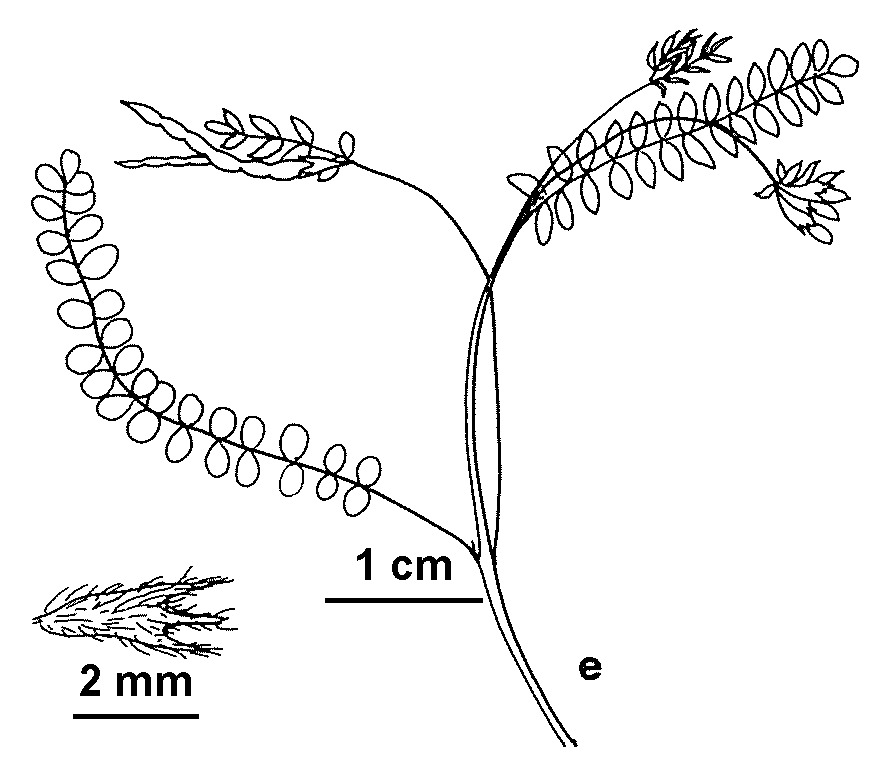Ornithopus perpusillus
L. Bird's FootProstrate or ascending annual herb to 30 cm tall; stems usually branched at base, pubescent. Leaves imparipinnate; leaflets 15–27, oblong or elliptic, 1–5 mm long, 1–2 mm wide, pubescent on both surfaces, entire, apices obtuse, often minutely mucronate; stipules to c. 1 mm long. Inflorescences 3–8-flowered umbels; peduncles mostly 1–3 cm long; bracts leafy, pinnate, mostly longer than flowers. Flowers on pedicels to c. 1 mm long; calyx 2–3 mm long, hairy, teeth c. half as long as tube; corolla 3–5 mm long, white to pink; standard oblong; wings oblong; keel obtuse, shorter than wings. Pod linear, 10–25 mm long, c. 2 mm wide, compressed, straight or slightly curved, glabrous or hairy, constricted between articles; beak filiform, to c. 3 mm long; articles 4–9; seeds ovoid, c. 1 mm long, brown. Flowers spring–summer.
GipP. Also naturalised ?NSW, New Zealand. Native to Europe. A fodder plant favouring light sandy soils, apparently naturalised on French Is. and near Yarram.
Ball (1968) describes the bracts as shorter than the flowers in O. sativus and longer than the flowers in O. perpusillus. At least some material from Victoria, and also New Zealand (Webb et al. 1988), matches O. perpusillus in all respects except for the reduced bracts shorter than the flowers.
Jeanes, J.A. (1996). Fabaceae. In: Walsh, N.G.; Entwisle, T.J., Flora of Victoria Vol. 3, Dicotyledons Winteraceae to Myrtaceae, pp. 663–829. Inkata Press, Melbourne.
 Spinning
Spinning
